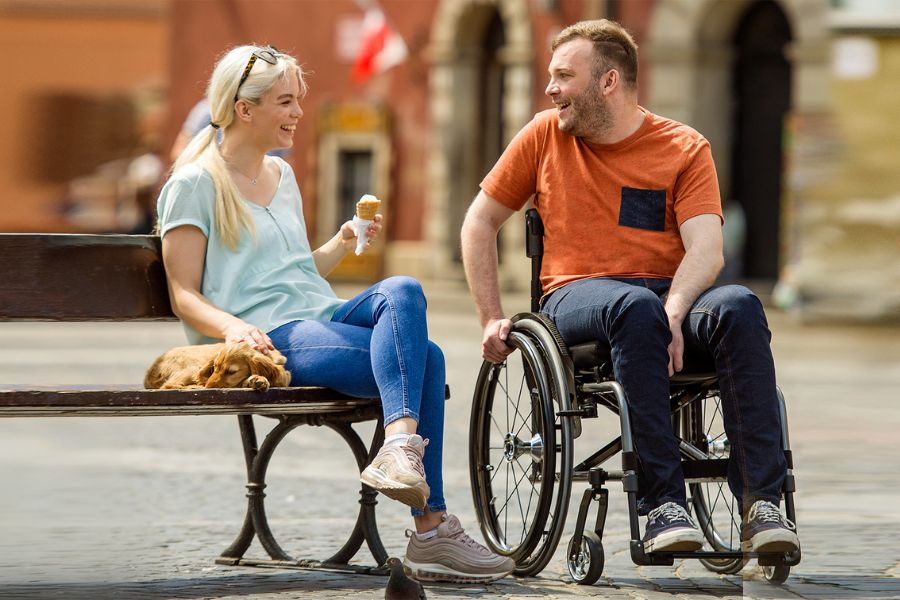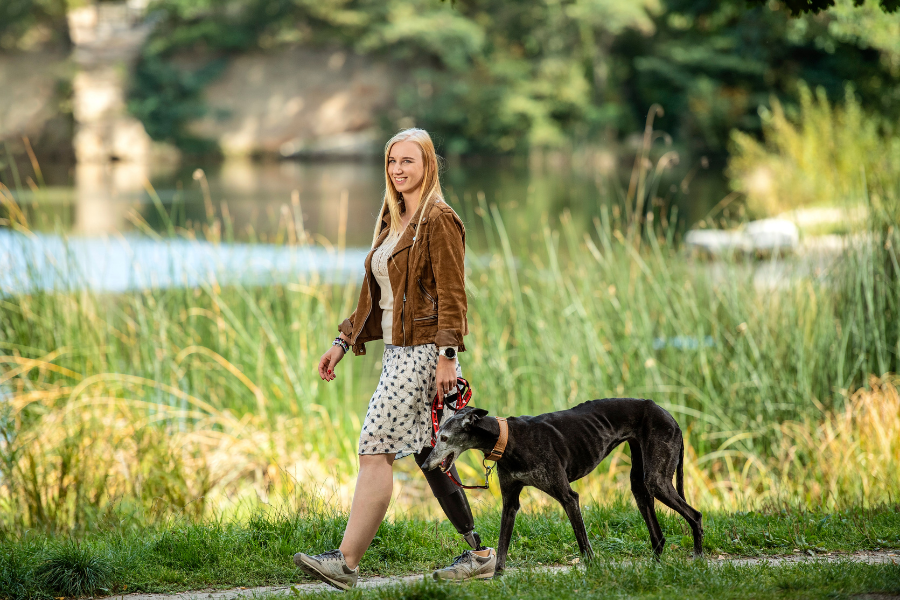Finding the right prosthetic foot for you!
It is important that your prosthetic foot fits your lifestyle, activities and goals. Your O&P professional will always set out to find the most suitable option for you, but reading up in advance never hurts!
There are at least four factors that determine which prosthetic foot is most suitable for you: your amputation level, level of activity, bodyweight and preferred cover. How do each of these factors come into play?
Your amputation level
If your foot is only partially amputated, you probably need a custom made prosthetic foot to fit your shoe. If you had an ankle-level amputation, on the other hand, you will need a special low version. If your foot was amputated above the ankle, a standard model is probably a good option, and you might be able to pick a flexible prosthetic foot with multiple axes and shock absorption. People with an above-the-knee amputation will have less control over their prosthesis at higher amputation levels, which means they will need a more stable prosthetic foot.
Finally, there is one more reason why the location of your amputation will affect which prosthetic foot is right for you. When you stand straight up, your prosthesis should bridge the gap between your residual limb and the ground, as well as ensuring that both legs are the same length. Most prosthetic feet are about 5 to 18 centimetres tall, so your amputation level partially determines which prosthetic foot options are available to you. If you have a low-level amputation, a tall prosthetic foot will not be suitable.
Your activity level
Your activity level and preferred activities all affect which prosthetic foot is right for you. Your O&P professional will always try to find you the prosthetic foot that will give you the greatest possible freedom of movement to optimise your quality of life. Wearing the wrong prosthetic foot can actually make it more difficult to get around. We have outlined the five different levels of activity below.
Limited indoor movement / Activity level K1
If you only have limited ability to walk or move, you probably want a foot with optimal stability that will help you keep your balance when standing up straight or taking small steps. In other words, safety is paramount! In this case, it is important that your foot meets the following requirements:
- Lightweight;
- A secure base, allowing you to safely place your weight on the foot;
- The ability to walk without bending the knee.
Limited outdoor movement / Activity level K2
Are you able to walk small distances at a leisurely pace? And can you navigate obstacles such as curbs and uneven surfaces? If so, the optimal prosthetic foot for you will probably offer stability and comfort by protecting your joints and residual limb. Here is what you should look for in a prosthetic foot:
- Shock absorption when your heel hits the ground;
- The ability to roll the foot slightly while walking;
- Smooth transition from standing to swing phase (taking a step);
- Flexibility, if you also want to walk on uneven surfaces.
Unrestricted outdoor movement / Activity level K4
If you can walk for extended periods of time and regularly find yourself in physically demanding situations at work, while practicing your hobby or while exercising, you will need a prosthetic foot that can withstand shocks, pressure and rotation. It is also important that your foot can respond when your cadence changes or when you start running. (For some activities, you may need a special sports foot) For everyday use, the following requirements are important:
- Smooth foot striking;
- Good forefoot support;
- Excellent energy release (e.g., a stiffer carbon foot for more support and energy storage);
- Ability to adapt to uneven terrain.
Your preferred foot cover
Foot covers come in different colours to match your skin tone, in a variety of sizes, and often with a separate big toe so you can wear sandals. More basic foot covers usually have a little less detail, such as toes, and some are even fixed to the foot prosthesis. High-quality foot covers often have more lifelike toes and skin colours. If you have a very active lifestyle, pick a foot with a replaceable foot cover, so you can use a different cover for different activities.

